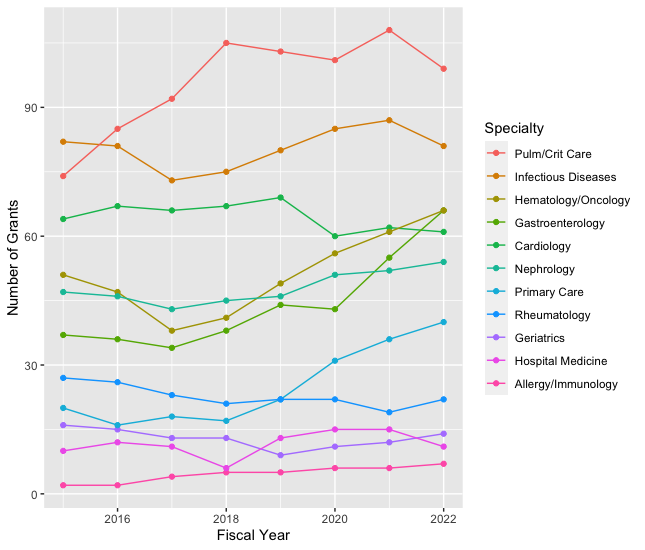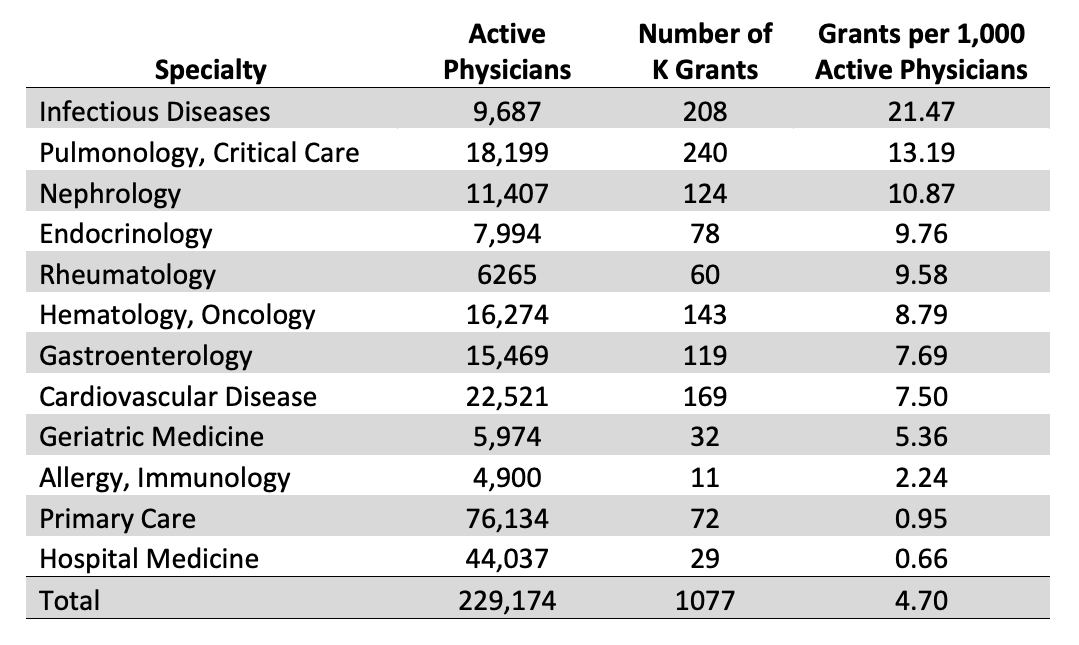Background: Hospital medicine is a rapidly growing specialty, but prior studies have raised concern that hospital medicine’s research output has not kept up with its clinical importance. The ongoing evolution of hospital medicine into an academic field requires clinician-investigators with dedicated time and funding to support research contributions. National Institute of Health (NIH) Career Development Awards (ie, K grants) are an important component of the pipeline establishing independent researchers, but these awards require significant resources for preparation and mentorship. This study aims to better understand the development of hospitalist-investigators by comprehensively characterizing trends in NIH K grants to internal medicine specialties over time.
Methods: The public NIH Research Portfolio Online Reporting Tools Expenditure and Results (RePORTER) system was used to extract information on K08 and K23 grants classified as internal medicine for fiscal years 2015 to 2022. Internet searches were conducted to identify the faculty webpage of each primary investigator, with information on specialty and departmental affiliation extracted. The number of active physicians per medical specialty was acquired from published estimates. (AAMC, Lapps) Grant characteristics were summarized descriptively; linear regression was used to assess the change in number of grants by specialty over time.
Results: A total of 1385 unique grants were awarded within the internal medicine category from 2015 to 2022. After removing awardees whose specialty was outside internal medicine (ie Emergency Medicine, Surgery, etc) or those that are not physicians (psychologists, occupational therapists, etc), there were 1290 unique grants. The total number of grants increased over time from 465 active grants in 2015 to 554 in 2022 (p< 0.01). There was an increase in number of grants over time for primary care, allergy/immunology, gastroenterology (p< 0.01), pulmonary/critical care, nephrology (p=0.02), and hematology/oncology (p=0.04), but not hospital medicine (p=0.31). (Figure 1).When indexed to the number of active physicians in respective specialties, hospital medicine received the fewest grants at 0.66 per 1,000 physicians. The specialty with the greatest number of grants per 1,000 physicians was infectious diseases at 21.47. Nearly all specialties had greater than 2 grants per 1,000 physicians except for primary care and hospital medicine (Table 1).
Conclusions: This study demonstrates that hospital medicine receives few career development grants compared to other specialties, with the lowest number of grants per active physician of any internal medicine specialty and approximately 10-fold less than most other specialties. Primary care also had a low number of grants per physician but has shown increases over the studied time period, unlike Hospital Medicine. While other studies have demonstrated a large increase in the number of hospitalists in the last decade, the number of career development awards has not increased over time despite calls for an increase in the number of hospitalist-investigators. This study suggests more institutional support for mentored research is needed for hospital medicine to mature as an academic field compared to other specialties. Primary care and other specialties may have lessons for hospital medicine in the development of clinician-investigators.


